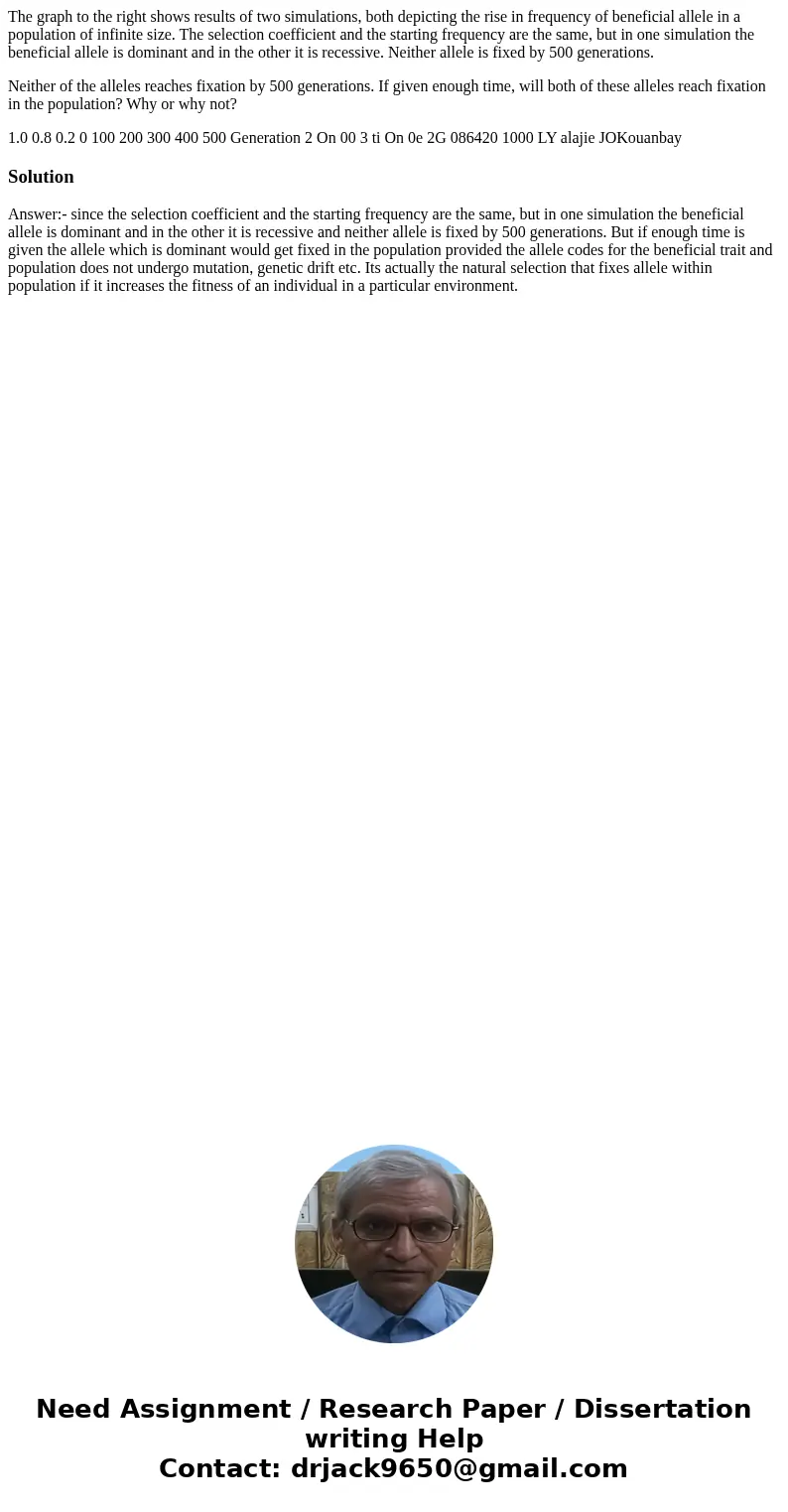The graph to the right shows results of two simulations both
The graph to the right shows results of two simulations, both depicting the rise in frequency of beneficial allele in a population of infinite size. The selection coefficient and the starting frequency are the same, but in one simulation the beneficial allele is dominant and in the other it is recessive. Neither allele is fixed by 500 generations.
Neither of the alleles reaches fixation by 500 generations. If given enough time, will both of these alleles reach fixation in the population? Why or why not?
1.0 0.8 0.2 0 100 200 300 400 500 Generation 2 On 00 3 ti On 0e 2G 086420 1000 LY alajie JOKouanbaySolution
Answer:- since the selection coefficient and the starting frequency are the same, but in one simulation the beneficial allele is dominant and in the other it is recessive and neither allele is fixed by 500 generations. But if enough time is given the allele which is dominant would get fixed in the population provided the allele codes for the beneficial trait and population does not undergo mutation, genetic drift etc. Its actually the natural selection that fixes allele within population if it increases the fitness of an individual in a particular environment.

 Homework Sourse
Homework Sourse